Hazaras
[27] Widespread ethnic discrimination,[28][29][30] religious persecution,[31][32][33] organized attacks by terrorist groups,[34][35] harassment, and arbitrary arrest for various reasons have affected Hazaras.Genetic and linguistic analyses describe Hazaras as an ethnically mixed group,[68] with varying degrees of ancestry linked to contemporary Turkic, Mongolic, and Iranic populations.According to historian Lutfi Temirkhanov, Mongolian detachments left in Afghanistan by Genghis Khan or his successors became the foundational layer of Hazara ethnogenesis,[22] with Turkic elements playing a secondary role.[87] Evidence for the Mongol influence in Hazara ethnogenesis includes linguistic data, historical sources, toponymy,[88] and population genetics studies.[99] When the Treaty of Gandomak was signed and the Second Anglo-Afghan War ended in 1880, Abdur Rahman set a goal to bring Hazaristan, Turkistan, and Kafiristan under his control.The southern part of Hazaristan was spared, as its inhabitants accepted his rule, while other regions rejected Abdur Rahman and supported his uncle, Sher Ali Khan.Over time, many Hazaras living in Tsarist Russian regions lost their language, culture, and ethnic identity due to the similarities in racial background and physical appearance of the local population, leading them to assimilate.Unlike those who migrated to Tsarist Russia, the Hazaras in Pakistan, India, Iran, Syria, and Iraq were unable to integrate fully due to differences in physical appearance, allowing them to retain their language, culture, and ethnic identity.The Taliban isolated Hazarajat from the rest of the world, even preventing the United Nations from delivering food to the provinces of Bamyan, Ghor, Maidan Wardak, and Daykundi.[112] The Ismaili Hazaras of Baghlan Province likewise supported the communists, and their pir (religious leader), Jaffar Naderi, led a pro-Communist militia in the region.[116] Notable Hazaras in leadership roles included Vice Presidents, ministers, and governors, such as Karim Khalili, Sarwar Danish, Sima Samar, Muhammad Mohaqiq, Habiba Sarābi, Abdul Haq Shafaq, Sayed Anwar Rahmati, Qurban Ali Urozgani, Muhammad Arif Shah Jahan, Mahmoud Baligh, Mohammad Eqbal Munib, and Mohammad Asim Asim.Other notable Hazaras include Sultan Ali Keshtmand, Abdul Wahed Sarābi, Akram Yari, Ghulam Ali Wahdat, Sayed Mustafa Kazemi, Ghulam Husain Naseri, Abbas Noyan, Daoud Naji, Abbas Ibrahim Zada, Ramazan Bashardost, Ahmad Shah Ramazan, Ahmad Behzad, Nasrullah Sadiqi Zada Nili, Fahim Hashimy, Maryam Monsef, and others.[120] Living in mountainous Hazarajat, where arable farmland is scarce, the Hazara people rely on these pasture lands for their livelihood during the long and harsh winters.[124][125] On 6 September 2022, Human Rights Watch reported that since the Taliban took over Afghanistan in August 2021, ISIS–K has claimed responsibility for 13 attacks against Hazaras and has been linked to at least three more, resulting in the deaths and injuries of at least 700 people.Over time, many Hazaras living in these regions lost their accent, language, and ethnic identity due to the similarities in racial structure and appearance with the local populations, leading to their assimilation.[103][148] During the period of British colonial rule in the Indian subcontinent in the 19th century, Hazaras worked in coal mines, road construction, and other working-class jobs during the winter months in various cities of what is now Pakistan.[7] Before Iran was forced to relinquish the Herat region according to the Treaty of Paris in 1857 during the reign of Naser al-Din Shah, the country possessed a much larger part of Greater Khorasan.In addition to being stylish and regal, the Hazara barak is also a warm winter garment that is resistant to moisture, allowing it to remain dry in snow and rain.The lower tunbans are made from fabrics such as flowered chits, while the upper skirts are crafted from finer materials like velvet, zari, or net, often adorned with a border or decoration at the bottom.The women's shirt is calf-length, with a close collar and long sleeves, featuring slits on both sides that fit over the skirts, which are appreciated for their modesty in accordance with Islamic customs.[137][127] An Iranica article on the language of Hazaras states that the dialect consists of three linguistic layers: (1) pre-Mongol Persian, with its own substratum; (2) Mongolian; and (3) modern Tajiki, preserving elements of both (1) and (2).[179] According to Dr. Lutfi Temirkhanov, a Doctor of Sciences, the ancestors of the Hazaras were originally Mongol-speaking[22][88] and only after resettling did they begin to mix with Persian-speaking and Turkic-speaking populations.Temirkhanov explains, "Hordes of Mongol princes and feudal lords found themselves in a Persian-speaking environment; they mixed with them, were influenced by Persian-Tajik culture, and gradually adopted the Persian language.[190] Some well-known Hazara writers and poets include Faiz Muhammad Kateb, Amir Khosrow Dehlavi, Ismael Balkhi, Hassan Poladi, Kazim Yazdani, Ali Mohaqiq Nasab, Kamran Mir Hazar, Basir Ahang, Sayed Askar Mousavi, Ali Baba Taj, Sayed Abutalib Mozaffari, Rahnaward Zaryab, and Aziz Royesh, among others.Many Hazara musicians are widely recognized for their skill in playing the dambura, a native lute instrument also found in other Central Asian countries such as Kazakhstan, Uzbekistan, and Tajikistan.[citation needed] Hazara cinema artists do not have a long history, but some of their famous actors and actresses today include Hussain Sadiqi, Abid Ali Nazish, Shamila Shirzad, Nikbakht Noruz, and others.Many Hazaras engage in various sports, including football, volleyball, wrestling, martial arts, boxing, karate, taekwondo, judo, wushu, Jujitsu, cricket, tennis, and more.[193][194] Rohullah Nikpai, won a bronze medal in Taekwondo at the 2008 Beijing Olympics, defeating world champion Juan Antonio Ramos of Spain 4–1 in the playoff final.[citation needed] Another notable Hazara athlete, Sayed Abdul Jalil Waiz, was the first badminton player to represent Afghanistan in the Asian Junior Championships in 2005, where he secured the first win for his country against Iraq with scores of 15–13 and 15–1.[198] Another notable figure is Kulsoom Hazara, a Pakistani female karate champion who has won several gold, silver, and bronze medals on national and international stages, including the Pride of Pakistan Award.





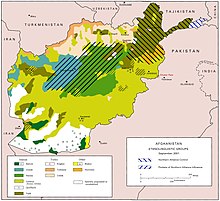

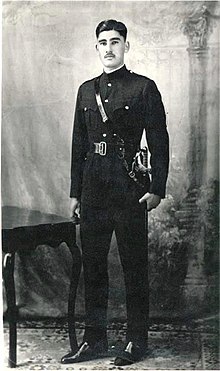

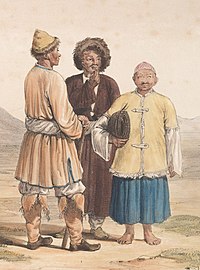

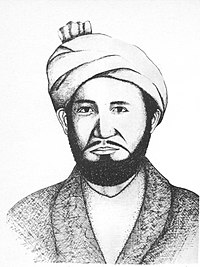



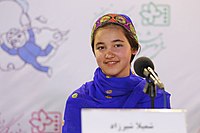



HazarawalHazaraKhazarAfghanistanPakistanEuropeAustraliaTurkeyIndonesiaCanadaPersianHazaragiAimaqsUzbeksTajiksTurkic peoplesMongolic peoplesromanizedethnic groupethnic groups in AfghanistanHazaristanQuettaMashhadDari Persianofficial languages of AfghanistanAustralian soldierDaykundimassacredEmirate of Afghanistanbetween 1888 and 1893persecutionreligious persecutionBaburnamatribesSultan Masaudi HazarasTurkoman HazarasAbdul Hai HabibiMongolicmingghanGenghis Khannative languagemixed groupTurkicIranicChar AimaksMongol invasionCentral AsiaMughal EmpireMongolTurco-MongolQara'unasChagatai Turco-MongolsIlkhanateTimuridsindigenousIranian tribesGhiljitoponymyVasily BartoldÁrmin VámbéryIlya PetrushevskyShah AbbasSafavid dynastyShia IslamAhmad Shah Durrani1888–1893 Hazara uprisingsBattle of UruzganPersecution of HazarasList of massacres against HazarasDost Mohammad KhanautonomyAbdur RahmanTreaty of GandomakSecond Anglo-Afghan WarTurkistanKafiristanSher Ali KhanHazara Uprisingsmassacregenocideethnic cleansingUruzganBritish IndiaHindu KushTsarist Russialanguagecultureethnic identityracial backgroundphysical appearanceUzbekistanTajikistanTurkmenistanKazakhstanDagestanAbdul KhaliqMuhammad Nadir ShahHabibullah KhanBalkh provincediscriminationKing of AfghanistanAbdul Khaliq Hazaraschool studentAfghan governmentZahir ShahrevoltIbrahim KhanKuchisAbdul Ali MazariSoviet–Afghan WarPeople's Democratic Party of AfghanistanSaur RevolutionHafizullah AminTaraki governmentPul-e-Charkhi prisonSoviet-Afghan WarmujahideenTanzeem Nasle Nau HazaraIslamistSoviet-backed Afghan governmentHazara nationalismHizbe-WahdatHarakat-e IslamiBurhanuddin RabbaniTalibanNorthern Alliance